Discover the unique portraits of the Inca emperors and Francisco Pizarro
At The Phoebus Foundation’s restoration studio, conservator Carlos González Juste and former Phoebus Fellow, Kaisa-Piia Pedajas, are currently restoring a unique series from the Phoebus collection, namely twelve portraits of Inca emperors and Francisco Pizarro. This month, we dive behind the scenes and take a closer look at this fascinating project.

Anonymous, Portraits of Inca Emperors and Francisco Pizzaro, c.1790-1810
These portraits, each no larger than an A4, depict an idealised representation of the Inca emperors and the figure of Francisco Pizarro, the conqueror of the Inca Empire. Portrait series such as these were very popular in the Viceroyalty of Peru during the 18th and early 19th centuries. Moreover, they were eagerly used as political tools. The iconography is based on an engraving by priest Alonso de la Cueva (1684-1754), in which the genealogy of the Inca emperors is succeeded by the Spanish monarchs. In this way, the Spanish rulers strengthened their claim as heirs of the Inca empire.
Throughout time, this message took on other meanings. The iconography was also used to document and confirm aristocratic Inca blood in certain families. As a result, family members linked themselves to Spanish nobility and were entitled to special privileges, including exemptions from taxes. As feelings of independence grew throughout the Viceroyalty, links with the Spanish monarchs were removed as an effort to restore the Inca empire.
Complex carrier and damage
Time to take a closer look at the portrait series. Studying the stretchers, it is clear that the portraits were produced on canvases, presumably made of cotton, and glued to strainers. However, this was not their original display. The irregular profiles reveal that the canvases were once cut from their original stretcher frame and then glued onto a new strainer. The canvases themselves are extremely thin with flat, regular waves, suggesting they were machine-made.
Beneath the blue background, we see a reddish ground, which is visible thanks to the transparency of the paint layers. These are so thin that it is almost impossible to see brush strokes!
Before the paintings came to the restoration studio for treatment, they had a dark, yellowish varnish layer and several overpaintings covering the canvases’ damages and edges. This varnish layer and retouches were also very irregular. The supports themselves were also particularly distorted due to the gluing to the strainer, creating strong tensions between the glued edges and the canvases.


Behind the paint layers
To find out how the portraits were created, we analysed one of the paintings using the imaging technique Ma-XRF. This scientific technique allows us to distinguish the different chemical elements of the painting and thus identify the pigments that make up the work. The resulting research showed the use of pigments from the last decades of the 18th century and the first half of the 19th century, confirming the possible execution date. Among other things, the Ma-XRF images showed us the presence of mercury, indicating the use of vermilion for the colour red, while arsenic points towards orpiment for the gold areas.
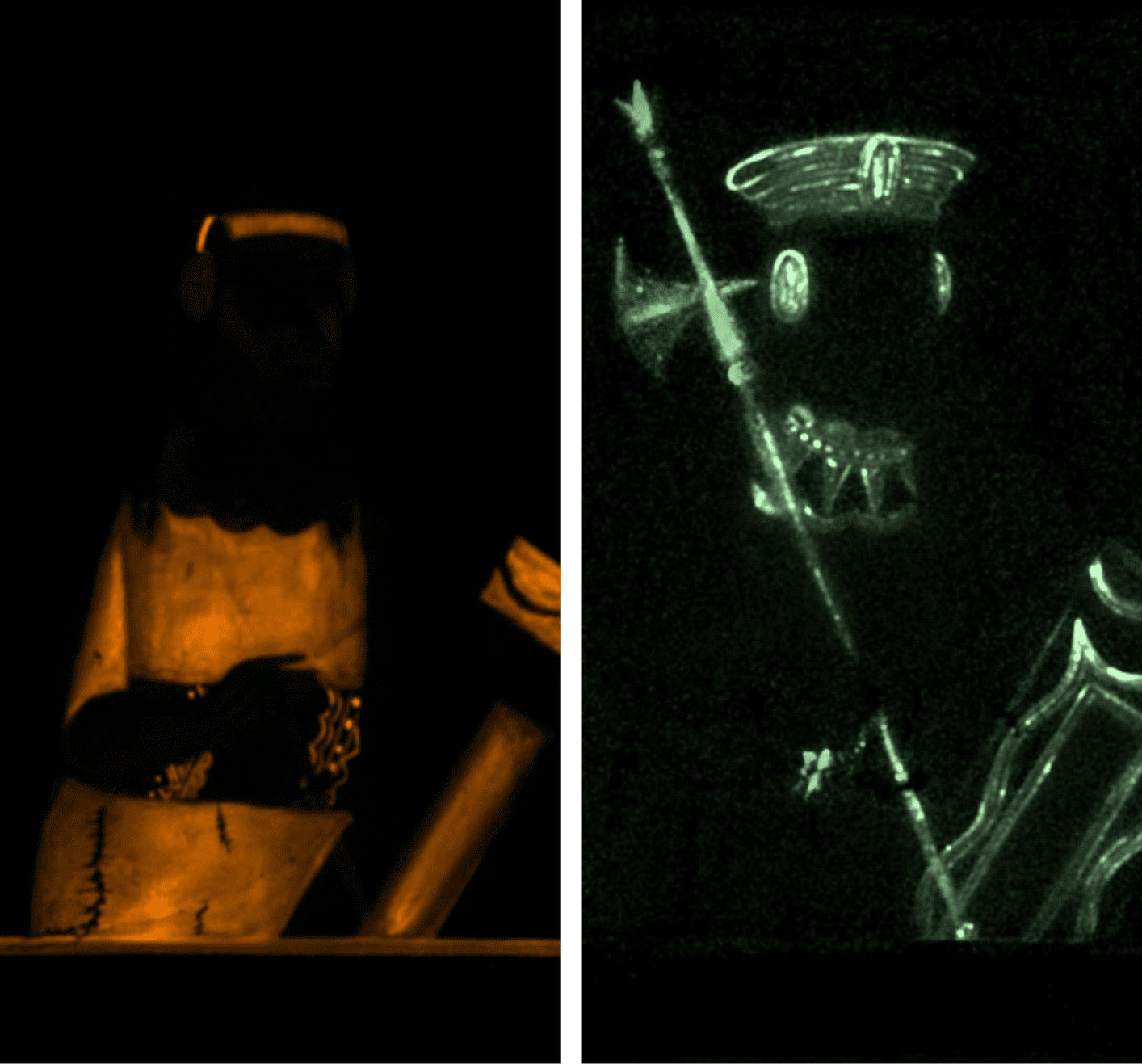
Before starting the restoration treatment, thorough tests were first carried out to find out the best method to remove the varnish. This was because it had darkened and had not only changed the colours of the paint but also made the supports, and the cloths, enormously stiff, resulting in various deformations. For cleaning, we opted for a non-woven Evolon® fabric and solvent mixtures that swell the varnish layers and can thus be easily removed with a cotton swab. In some areas, we also combined these techniques with gentle mechanical cleaning.
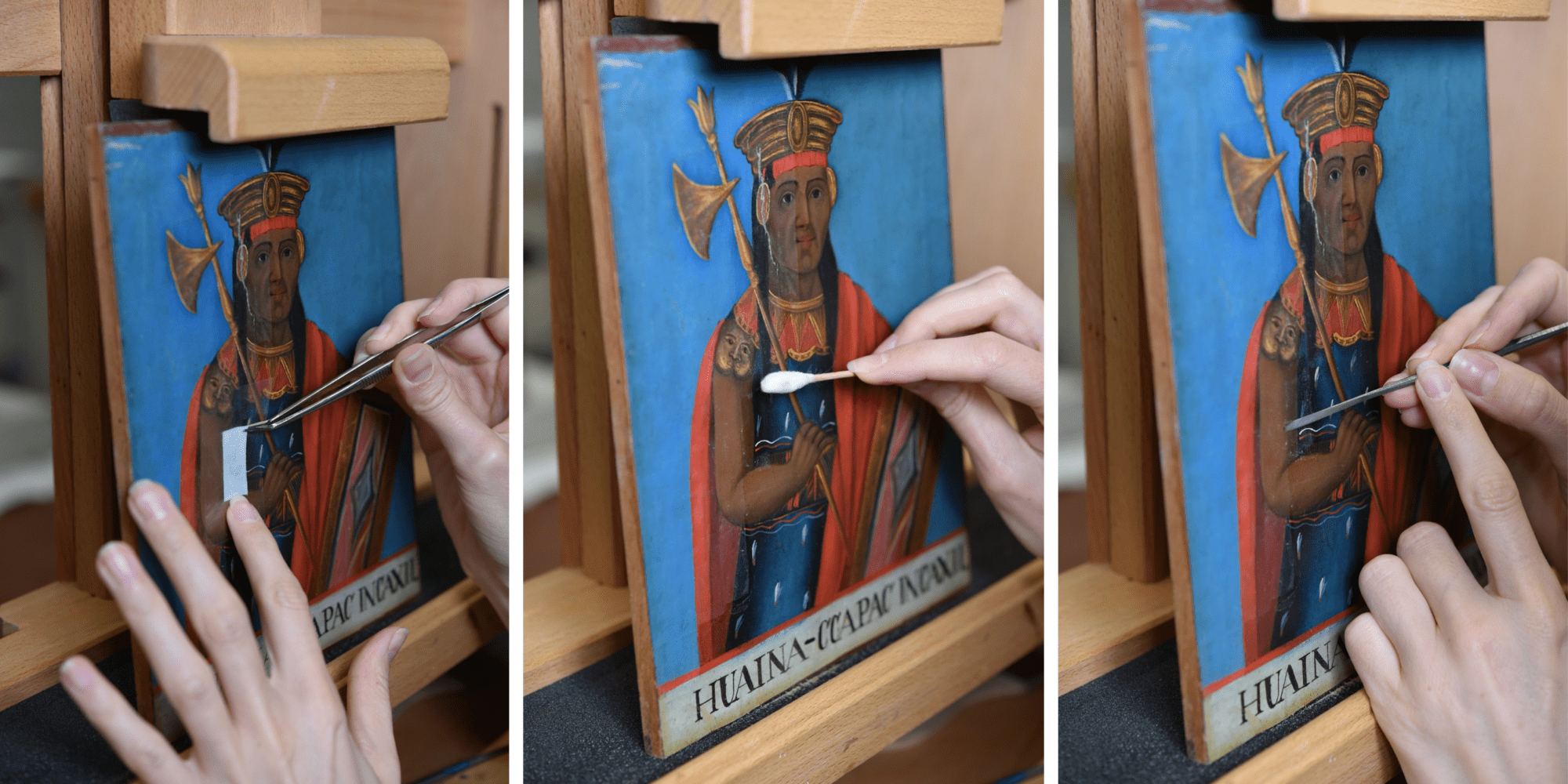

Certain pigments showed greater sensitivity and required extra attention. Additionally, we noted that the paintings had been only partially cleaned during previous restoration treatments and that a darker layer remained in some places (such as the incarnate and accessories of the portraits). After taking off the varnish layers, we also removed several overpaintings from the surface and reduced stains where necessary. Although the paintings initially looked the same, it became clear during and after the cleaning that the conditions of the paint layers and supports were vastly different for each portrait.
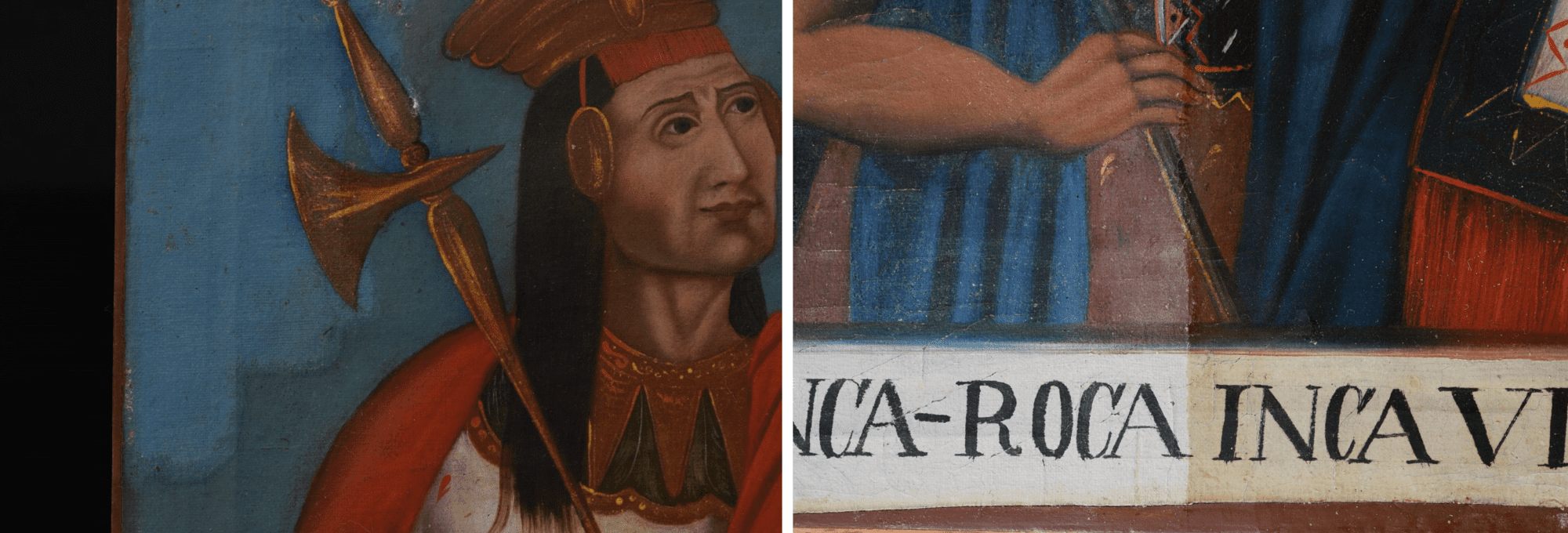
Thanks to the removal of the rigid layer on the paintings, the canvases also became looser and distortions reduced significantly in most cases. Many paintings were placed under weights to make the canvas slightly flatter. Areas and distortions that required extra effort were carefully treated with moisture and underwent thermo-treatment.
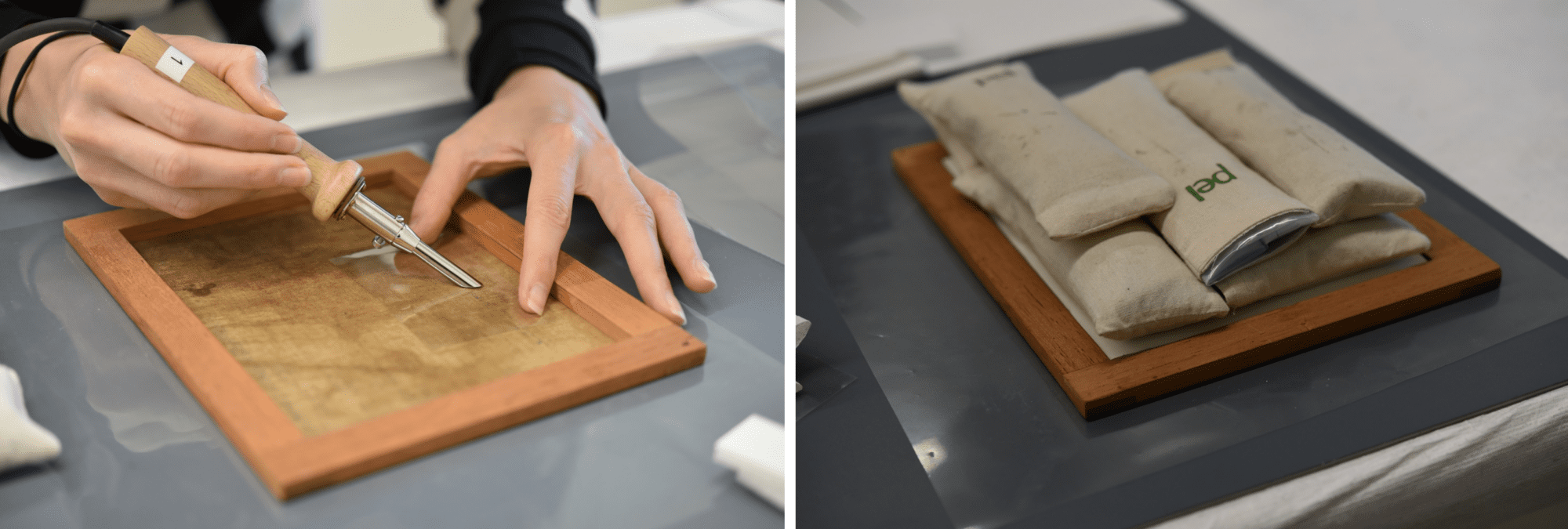
Furthermore, we also repaired the tears that were present in the canvas of some portraits. To minimise the damage, these tears were flattened and the edges were also aligned. They were then consolidated and supported on the back with a suitable adhesive.
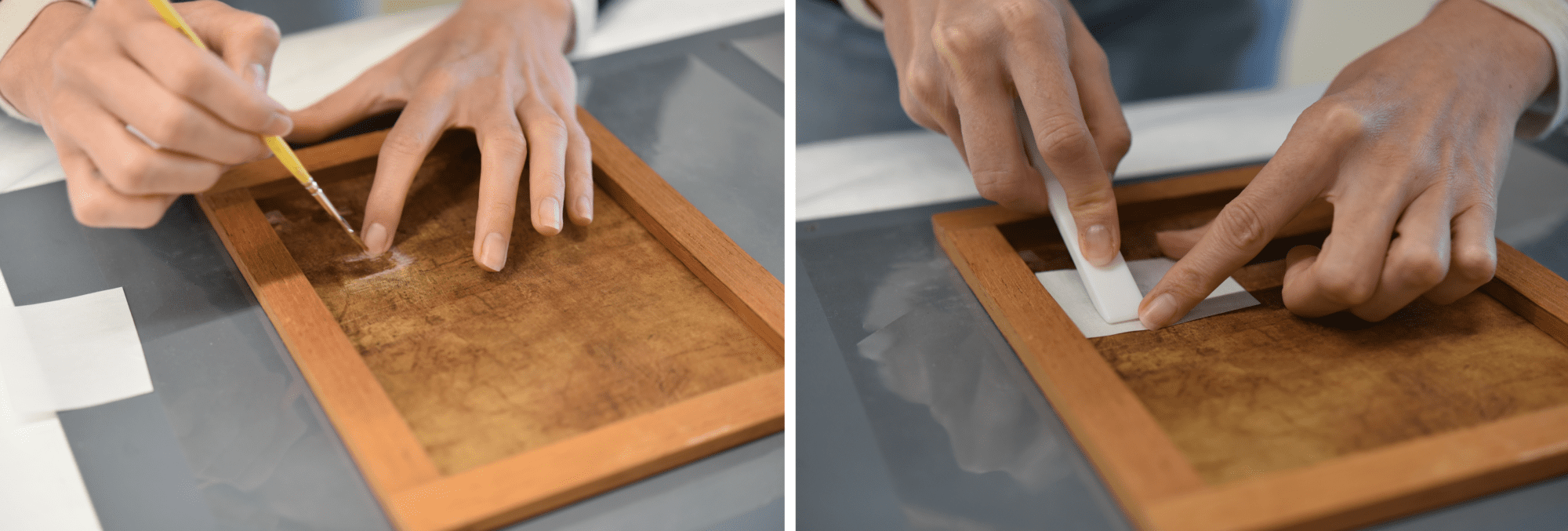
After the structural treatment, a thin layer of natural varnish was applied. This layer acts as an insulation layer for the original surface and helps to saturate the colours after removing the old varnish layers.
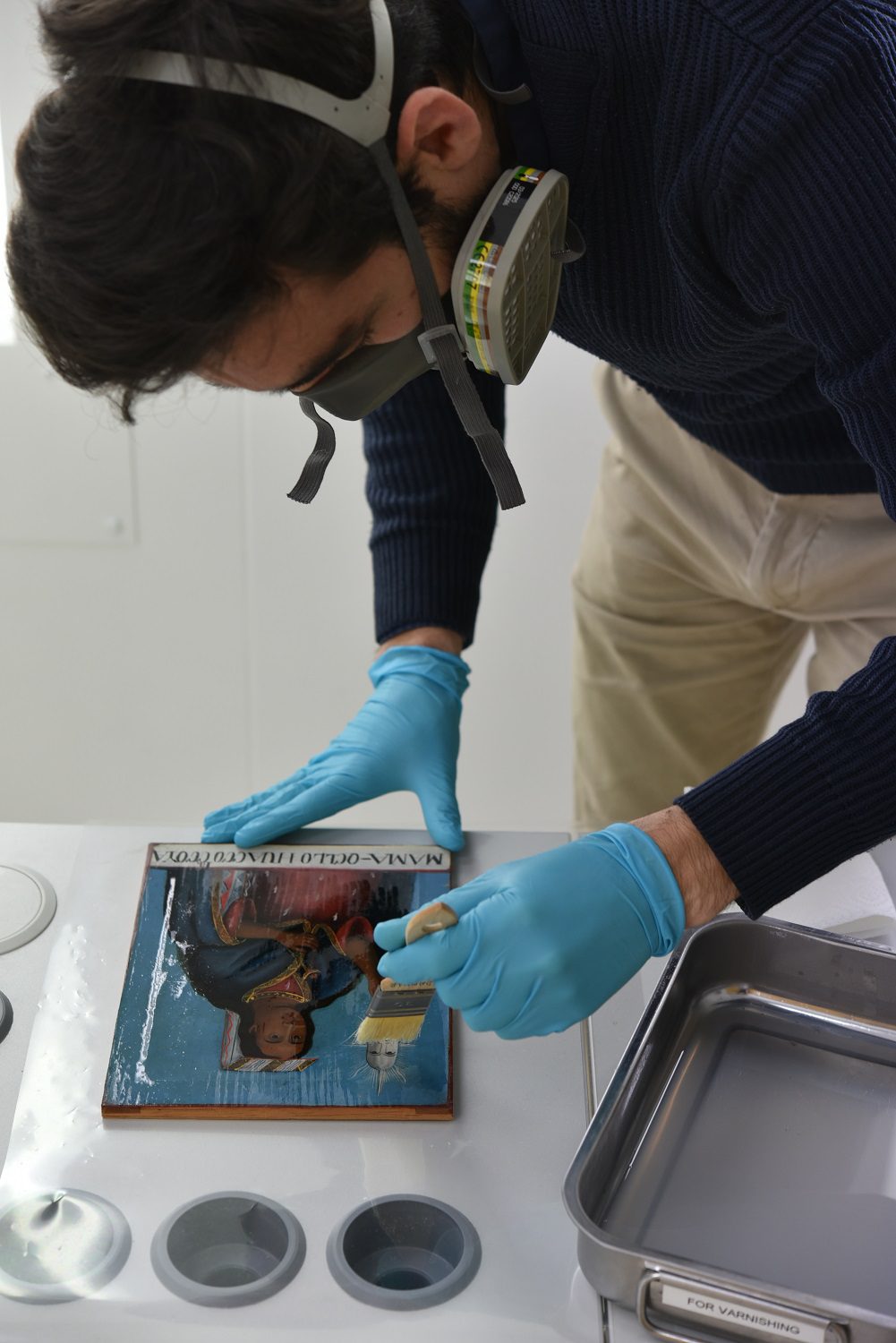
The restoration of this exceptional portraits series is still in full swing! After varnishing, our conservators will also continue to fill and retouch the gaps. As a result, the Inca emperors and Francisco Pizarro can soon be admired again in all their glory!
Curious about the results? Keep an eye on our social media and website!